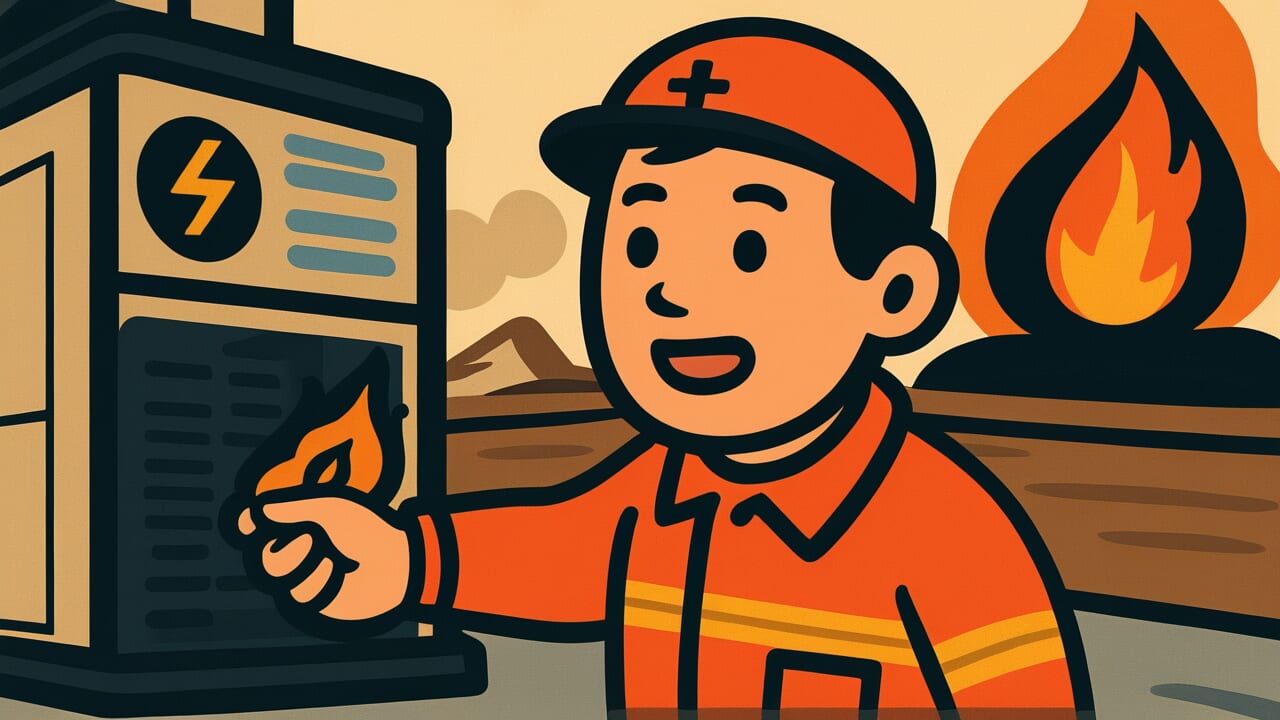How to Read “When you see fire, think it’s a fire”
Hi wo mitara kaji to omoe
Meaning of “When you see fire, think it’s a fire”
“When you see fire, think it’s a fire” means that when you discover a small sign or warning, you shouldn’t take it lightly.
Instead, you should assume a major problem has already occurred or is about to occur, and stay alert.
This proverb teaches the importance of not missing even tiny signs before problems surface. You should assume the worst and take action early.
When you sense fire, don’t think “it’s just a small flame, so it’s fine.” Instead, think “this might already be a fire” and act accordingly.
Today, people use this saying in business, relationships, health management, and many other situations.
For example, when company performance shows slight decline, when you feel something odd in a relationship, or when you notice small changes in your health.
By responding with urgency at these early stages, you can prevent situations from becoming irreversible. That’s the lesson here.
Origin and Etymology
There are no clear records of when this proverb first appeared in literature or where it originated.
However, based on its structure, it likely emerged as a lesson deeply connected to Japan’s wooden architecture culture.
During the Edo period, wooden houses were packed tightly together in urban areas. Fire was the most feared disaster.
There’s even a saying “fires and fights are the flowers of Edo,” showing how common fires were as daily threats.
Once flames appeared, they could quickly develop into massive fires that burned entire towns. This wasn’t unusual at all.
Against this background, people learned that when you sense fire, no matter how small, you should assume a major fire has already started.
You should act immediately. Even if you only see a bit of smoke or smell something burning, the situation might already be beyond saving.
That’s why you should prepare for the worst. This wisdom about disaster prevention is embedded in the proverb.
This expression expanded from the specific danger of fire to a universal lesson about staying alert to all problems.
It teaches the importance of observation skills to catch small warning signs and imagination to anticipate crises. This is practical wisdom from our ancestors.
Usage Examples
- Sales have dropped a little, but “when you see fire, think it’s a fire,” so let’s plan countermeasures now
- He seems a bit distant. “When you see fire, think it’s a fire,” so maybe we should talk soon
Universal Wisdom
The proverb “When you see fire, think it’s a fire” reveals deep wisdom about a psychological weakness humans have: optimism bias.
We humans have an instinct to look away from inconvenient realities.
When we discover a small problem, we think “it’s still okay” or “it’ll probably work out somehow.”
This optimistic thinking helps maintain peace of mind in daily life. But in crisis management, it leads to fatal errors in judgment.
When problems are small, dealing with them is easy and the damage is minimal.
However, at that stage people tend to think “it’s embarrassing to make a fuss” or “let’s wait and see.” They postpone action.
By the time the problem grows large and becomes obvious to everyone, it’s already too late.
Our ancestors must have learned this human tendency through repeated experience.
This proverb has been passed down through generations not because it’s simple advice.
It’s because it addresses a blind spot in human psychology. Crises always begin with small signs.
Even knowing this truth, actually taking action is difficult. That’s why these words continue to sound the alarm across time.
When AI Hears This
If you calculate the actual probability that fire means a real fire, you get a surprisingly low number.
For example, suppose a region has 10 fires per year, while people see fire 100,000 times (cooking, heating, cigarettes, etc.).
By simple calculation, the probability that seeing fire means an actual fire is 0.01 percent.
Yet this proverb tells us to treat that 0.01 percent as 100 percent.
From a Bayesian inference perspective, this directly contradicts basic statistical principles.
Normally you should multiply the evidence “saw fire” by the prior probability “fire occurrence rate” and judge calmly.
But human survival strategy intentionally abandons this mathematical accuracy. Why? Because one missed fire is more fatal than 9,999 false alarms.
What’s interesting is the difference from how AI would judge.
AI would calculate precise probability from past data and conclude “not a fire” at 0.01 percent. Statistically correct, but that one miss could cost lives.
In other words, this proverb shows that when the cost of false negatives (missing something) is overwhelmingly higher than false positives (wrong alarms), overreaction is more rational than mathematical accuracy.
It’s a strategy that maximizes survival probability.
Lessons for Today
What this proverb teaches modern people is the importance of courage not to postpone problems.
Modern society is complex, and everything progresses at high speed.
In business, relationships, and health, the speed at which small problems become serious is incomparably faster than before.
That’s why we need the sensitivity to take even slight discomfort or warning signs seriously.
The point isn’t to “become a worrier.”
It’s to develop observation skills to notice small signs, and build habits of responding calmly but quickly.
If you take action while problems are small, you can usually solve them without great effort.
When a small warning light turns on in your heart, don’t ignore it.
Even if you think “maybe it’s just my imagination,” checking costs nothing.
That one step can protect you and those you care about. Let’s apply our ancestors’ wisdom to how we live today.



Comments